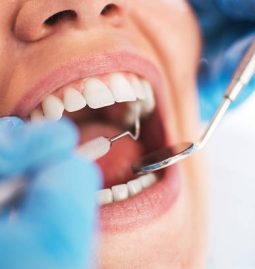Periodontal health is crucial for maintaining a vibrant smile and overall well-being. If you’ve been told you need periodontal treatment, you might be wondering what that entails. Let’s break down everything you need to know about these treatments, from the basics to what you can expect during and after your appointment.
What is Periodontal Disease?
Periodontal disease, often referred to as gum disease, is an inflammatory condition affecting the gums and bones supporting the teeth. It starts with bacterial growth in your mouth and may end, if not properly treated, with tooth loss due to the destruction of the tissue around your teeth.
Stages of Periodontal Disease
-
Gingivitis: The earliest stage, characterized by red, swollen gums that bleed easily during brushing.
-
Periodontitis: If gingivitis isn’t treated, it can advance to periodontitis, where the gums pull away from the teeth, forming pockets that become infected.
-
Advanced Periodontitis: The final stage, where the bone and fibers supporting the teeth are destroyed, leading to loose teeth or tooth loss.
Why Treatment is Essential
Proper treatment ensures the preservation of your teeth, decreases the risk of further dental issues, and positively impacts your systemic health. Periodontal disease has been linked to other health problems like heart disease and diabetes, making treatment vital beyond oral health.
Goals of Periodontal Treatment
-
Eliminate infection in the mouth.
-
Prevent further destruction of the gums and bone.
-
Restore supportive tissues around the teeth.
-
Maintain oral aesthetics and functionality.
Types of Periodontal Treatments
The treatment plan varies depending on the stage of the disease and the specific needs of the patient. Here’s what you can expect:
Non-Surgical Treatments
-
Scaling and Root Planing: Deep-cleaning methods to remove plaque and tartar from above and below the gumline.
-
Antibiotics: Topical or oral antibiotics can help control bacterial infection.
Surgical Treatments
-
Flap Surgery: The gums are lifted back for deep cleaning and then sutured back into place.
-
Bone and Tissue Grafts: These are used to regenerate any lost bone or gum tissue.
-
Guided Tissue Regeneration: A procedure that stimulates bone and gum tissue growth.
Preparing for Your Periodontal Treatment
Before undergoing treatment, ensure your periodontist provides clear instructions on how to prepare. This often includes dietary adjustments, modifying your oral hygiene routine, or pre-procedure medications.
Questions to Ask Your Periodontist
Here are some questions that might be helpful:
-
What treatment options are available for my condition?
-
What are the expected outcomes of the procedure?
-
How long will recovery take?
-
What type of post-treatment care is required?
The Treatment Process
Each treatment has its procedure, but here’s a general outline of what to expect:
During the Procedure
You will likely receive local anesthesia to numb the area. Non-surgical procedures are usually completed in the dental chair, while surgical ones may require more extensive preparations. Your periodontist will use specialized tools to perform the necessary actions, whether it’s cleaning, grafting, or tissue regeneration.
Recovery and Aftercare
Post-treatment care is pivotal for successful healing and maintaining periodontal health. Knowing what to expect and how to care for your gums afterward makes the process smoother.
Post-Treatment Guidelines
-
Follow dietary recommendations to avoid aggravating the treated area.
-
Use prescribed or recommended oral rinses to reduce infection risks.
-
Avoid smoking and alcohol, as they can delay healing.
-
Attend follow-up appointments for professional assessment and cleaning.
Managing Discomfort and Complications
While some discomfort is natural, it’s important to manage it properly:
-
Over-the-counter pain relief medications can be helpful.
-
Contact your periodontist if you experience severe pain or unusual symptoms like excessive bleeding or swelling.
With proper periodontal treatment in Harrison, many patients find relief from symptoms and a renewed sense of dental health.
Long-term Maintenance
Good oral hygiene practices are imperative in maintaining results from your periodontal treatments. Regular brushing, flossing, and visits to your dentist will help keep your gums healthy.
Consider professional cleaning treatments every three to four months. These sessions are focused on preventing the accumulation of plaque and tartar that can exacerbate gum conditions.
Lifestyle Modifications
Improving your diet, reducing stress, and quitting smoking can significantly promote healthier gums in the long term. Avoiding sugary and acidic foods also helps maintain a balanced oral environment.
Beyond Gum Health Additional Benefits of Periodontal Treatment
Treating gum disease does more than save your teeth; it can contribute to better systemic health. Research links periodontal health to conditions like heart disease, diabetes, and even complications during pregnancy, making treatment beneficial beyond your mouth.
Incorporating procedures like teeth whitening in Harrison, NJ, after periodontal treatment can enhance your smile aesthetics, boosting your confidence and overall satisfaction with your oral health journey.
Finding the Right Professional
Selecting a skilled periodontist is crucial. Look for someone with experience in the type of treatment you need. Checking online reviews and asking for recommendations can be beneficial. A qualified professional can guide you through each step and tailor a treatment plan aimed at achieving the best possible outcomes.
For those in specialized areas, finding a Harrison oral surgeon who collaborates with your dental team can be an important step. This ensures all aspects of your dental and surgical needs are aligned for comprehensive care.
Final Thoughts
Understanding periodontal treatments and knowing what to expect helps demystify the process and ensures you’re prepared. With the right guidance, support, and aftercare, you can manage periodontal disease effectively. The road to healthier gums and a beautiful smile is entirely attainable, and knowing what to expect is half the battle won. Keep up with your regular dental checkups and practice good oral hygiene to maintain those results long into the future.








